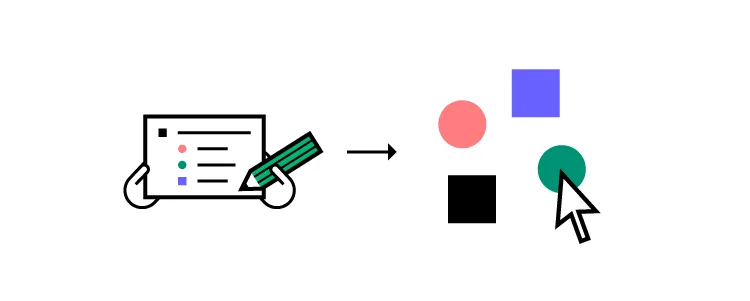Competitive Analysis for UX – Top 6 Research Methods
A UX competitive analysis is a crucial part of UX research. It’s an opportunity for designers to leverage what works, avoid what doesn’t, and identify gaps to gain a competitive advantage.
A UX competitor analysis can also help designers understand their users better. By looking at the competition through customers’ eyes, UX researchers can empathize better to discover what excites and frustrates them.
Get better results from user testing with UXPin’s advanced prototyping and testing tool. Design high-fidelity prototypes with code-like functionality that mimic your product’s user experience. Sign up for a free trial to explore all of UXPin’s advanced features.
Table of Contents
What is a UX Competitive Analysis?

A UX competitive analysis is a technique that UX researchers use to understand the competition, identify opportunities, and find an edge. This analysis provides UX design teams with valuable insights to develop a UX strategy and enhance a product’s user experience as well as business value.
A UX competitive analysis focuses primarily on design and interaction, but UX researchers also consider how business and other facets impact the overall user experience.
Why Should You Do a UX Competitive Analysis?
There are several reasons why you want to conduct a UX competitive analysis.
- Understand your market position and share
- Develop a UX strategy and prioritize the design process
- Discover how competitors solve similar usability issues
- Learn about failures and how to avoid them
- Determine competition strengths and weaknesses
- Learn about trends and innovation
- Support user and market research
What’s the Purpose of a UX Competitive Analysis?
A UX competitive analysis aims to complement other UX research to get a comprehensive picture of the market, competitors, products, and users. Here are several scenarios where designers conduct competitive analysis:
Building a new Product or Feature
UX competitor analysis is a crucial part of discovery-phase research. UX teams use this competitive analysis to understand the competitive landscape and find opportunities.
Identify Market Gaps
UX researchers can use competitive analysis to identify gaps and opportunities. These gaps could be product innovation or simply a better pricing structure.
Finding a gap in the market gives a company an edge over the competition, making their product more desirable.
Companies don’t always look for gaps; they often improve on (or steal) innovative competitor ideas. Facebook is renowned for copying the competition, while Twitter ended Clubhouse’s reign as the social audio platform with Spaces.
Support UX Research
Design teams also use a UX competitive analysis to confirm a hypothesis or support user research.
When Should You Do a UX Competitive Audit?

UX teams conduct a UX competitive analysis at the start of a new project during the early stages of the design process. As the competitive landscape and market change regularly, designers keep informed by conducting periodic competitor research.
Types of Competitors to Audit for UX
Competition falls into two categories:
- Direct competitors
- Indirect competitors
Understanding direct competitors can help improve your product and pricing to make your brand more desirable, while indirect competition could expose new opportunities.
Who are Direct competitors?
Direct competitors offer the same goods and services to the same or overlapping target market. These competitors generally compete on price because their offerings are so similar.
Instagram, TikTok, and Snapchat are direct competitors offering similar products to a similar target market.
Who are Indirect competitors?
Indirect competitors operate in the same market space but offer different products. While these are different products, they usually fulfill the same need, so the customer chooses one over another.
Instagram and LinkedIn are indirect competitors. While these platforms fulfill different needs, they both compete for user attention.
For example, many couples go out for dinner and a movie. A cinema with a restaurant in the foyer competes with other local cinemas (direct competitors) and restaurants (indirect competitors).
In tech, we often see indirect competitors with product overlaps. For example, Twitter and YouTube are indirect competitors, but the former offers video hosting for Tweets to keep users on the platform.
Before Twitter offered video hosting, users had to upload video content to their YouTube account and share the link in a Tweet. Nowadays, Twitter users don’t need a YouTube account to share video content, and you can embed Tweet videos in blog posts, resulting in less traffic for YouTube.
6 UX Competitive Analysis Research Methods
Here are six methods for analyzing the competition.
SWOT Analysis
SWOT (strengths, weaknesses, opportunities, and threats) is an analysis technique companies can use internally or against the competition. Companies can conduct a SWOT analysis on an entire industry, market, competitor, product range, or a single product.
A SWOT assesses four key areas:
- Strengths: Where is a competitor strongest? Areas where the competition makes it most difficult to compete.
- Weaknesses: Where is your competition weakest? What don’t they offer or do poorly? Pro tip: You can usually find this answer in your competitor’s 1-star reviews.
- Opportunities: What opportunities are open to your competition that they’re currently not exploiting? This opportunity could be a simple feature like one-click checkouts for an eCommerce brand to increase conversions.
- Threats: What could potentially harm your competitor’s business? These threats are usually external, like competition, legislation, politics, technology, etc.
This article from Investopedia provides a step-by-step guide to conducting a SWOT analysis.
Using a Competitor’s Product
One of the easiest ways to “spy” on your competition and gather data is using their products. For example:
- Firstly, what are your competitor’s touchpoints? What happens when you land on their website, download the app, read a blog article, etc.? How does the competition turn traffic into users and then paying customers?
- How does your competitor present its products and pricing to customers?
- What happens when you sign up for a free trial?
- How easy is it to upgrade? And more importantly, do they make it easy to cancel–what’s that process like?
- Analyze the overall UI design, including layout, microinteractions, colors, typography, etc.
- Use the product as a customer to complete tasks. Were there any pain points? What does your competitor do well and poorly?
Treat yourself as a usability participant by using an empathy map to record your feelings and emotions using your competitor’s product. Maybe you were confused and frustrated by an unclear pricing structure, or the intuitive UI and microinteractions made it fun to use the product.
Reading Competitors’ Reviews
Reviews from mobile app stores, social media (Facebook pages, Twitter mentions), marketplaces, and websites like TrustPilot are excellent resources for analyzing competitors (and also your product’s UX). These customer reviews allow you to find out what customers love and hate about your competition.
Spend time analyzing reviews to find positive and negative patterns, and compare these patterns with your other research. Customers often leave comments like, “I wish the product could…” These types of reviews allow designers to identify gaps that competitors aren’t filling.
Comparison Chart
Comparison charts are best for direct competitors that offer similar product features. For example, you might want to compare a paid plan to your competitors to determine which company offers customers the most value.
This article from EdrawMax provides a breakdown of the five kinds of comparison charts and how to conduct one.
User Journey Comparison
User journeys map how customers complete tasks from start to end. Optimizing this end-to-end process can enhance the user experience and increase conversions.
Comparing your user journeys to successful competitors could uncover the keys to their secret to their success. For example, you might discover your competitors use fewer steps or strategic CTA placement to convert more customers.
Usability Test on a Competitor’s Prototype
One way to compare the competition is by building a prototype replica of their product or flow to see how users interact and engage with it. Designers can use these insights to revise their designs and make improvements.

The aim isn’t to copy your competition. Instead, you’re studying participants’ reactions and asking questions about which prototype they find more intuitive, attractive, and engaging.
Prototyping and Testing in UXPin
UXPin’s code-based design tool allows designers to build intuitive and engaging prototypes with user interfaces that look and function like the final product.
UXPin prototypes get actionable feedback from stakeholders and meaningful results from usability studies to improve the product and create the best user experience.
UXPin also enhances collaboration between design teams and engineers, resulting in less rework and smoother design handoffs. This enhanced workflow reduces time-to-market–an crucial metric in today’s competitive market.

Design systems are another way companies get an edge over the competition with better quality, consistency, and a faster time-to-market. UXPin allows startups and small businesses to build, manage, and scale a design system from scratch.
Designers can also use built-in design systems like Material Design, Bootstrap, iOS, and Foundation to prototype ideas fast!
Enhance your end-to-end design process and get an edge over the competition with the world’s most advanced code-based design tool. Sign up for a free trial and start designing better user experiences for your customers with UXPin.




